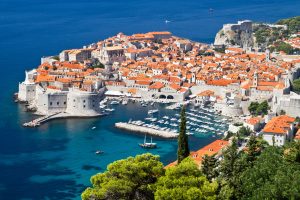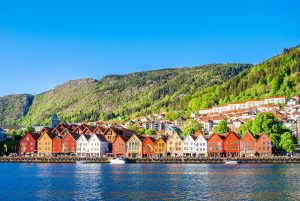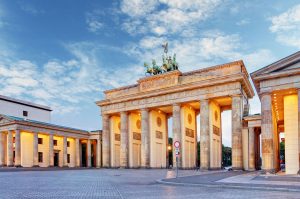Gdańsk is a city where Hanseatic merchant tradition meets the rebellious spirit of the “Solidarność” movement and the glowing beauty of Baltic amber. Between brick baroque, salty sea air, and trendy waterfronts, this coastal metropolis delivers an urban breeze that’s as charming as it is refreshing. Whether it’s your first time on the Baltic Sea or you’re already a seasoned visitor, this guide will lead you to the city’s highlights, panoramic views, and hidden gems. Pack your camera… and maybe an extra pair of shoes—cobblestones are practically a way of life in Gdańsk.
Top Attractions in Gdańsk
Long Market (Długi Targ) & Main Town Hall
The colorful heart of the Main Town pulses between ornate gabled houses and the famous Royal Route. Once graced by Polish kings, today street performers, souvenir stalls, and photographers gather here. Inside the Town Hall, you can admire the grand Council Chamber with its gilded ceiling—and give your neck muscles a workout. Climb the tower for a 360-degree view of the Motława River. Those who tackle the stairs will be rewarded with a postcard-worthy panorama.
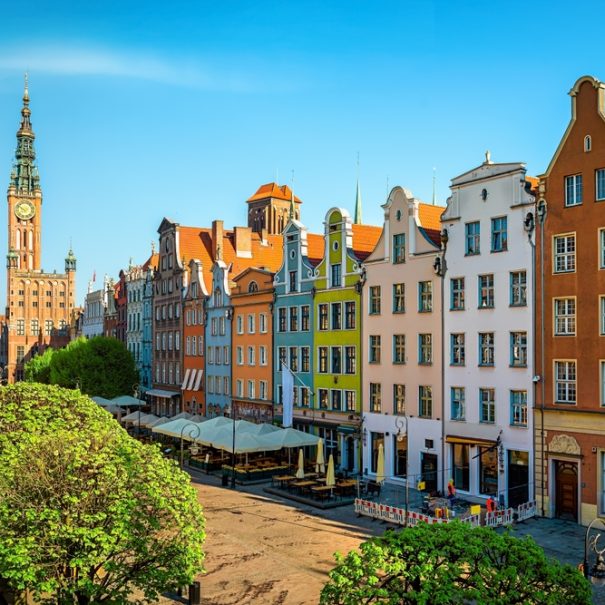
The Crane (Żuraw)
This wooden crane from the 15th century is the city’s oldest symbol—and still jaw-dropping today. The giant treadmills inside were once powered by dockworkers’ feet to load cargo onto ships. Today, it houses part of the National Maritime Museum and offers insight into Gdańsk’s trading power.
Fun Fact: In the 15th century, the Żuraw was the largest harbor crane in Europe.
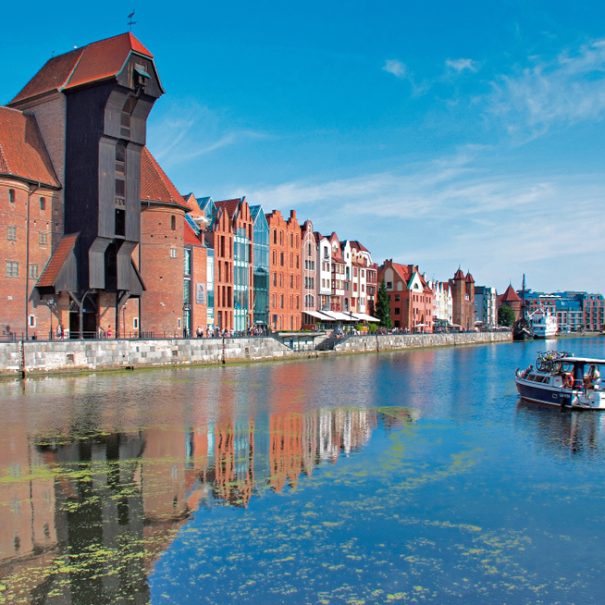
Neptune Fountain
In the heart of Long Market stands the famous Neptune Fountain, a symbol of the city since 1633 and a popular photo spot. The bronze sea god watches over the square, reminding visitors of Gdańsk’s maritime heritage. Legend has it that the city’s famous Goldwasser liqueur was created here—after Neptune angrily struck the fountain with his trident, the water turned to gold-flecked alcohol.
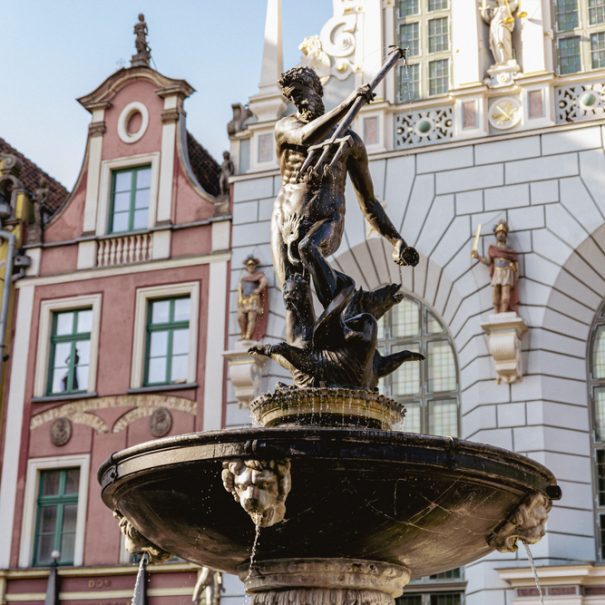
St. Mary’s Church (Bazylika Mariacka)
One of Gdańsk’s most iconic landmarks, St. Mary’s Church is the largest brick church in Europe and a masterpiece of Gothic architecture. Climb the 409 steps to the tower for a breathtaking panoramic view. Inside, an astronomical clock from the 15th century displays not just the time, but also constellations and moon phases.
Fun Fact: St. Mary’s Church can hold around 25,000 people—about the size of a small football stadium!

Westerplatte
On this narrow peninsula, the German battleship “Schleswig-Holstein” opened fire on September 1, 1939, starting World War II. Today, a 25-meter granite monument honors the Polish defenders whose seven-day resistance became a national symbol of perseverance. Walking paths through bunker remains and outdoor exhibitions bring history vividly to life. A peaceful yet powerful place.
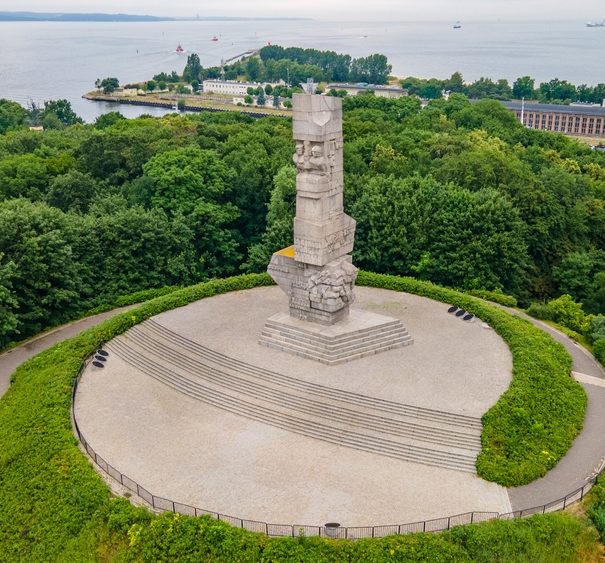
Mariacka Street
Picturesque gargoyles, cobbled front gardens, and amber displays as far as the eye can see—Mariacka Street is considered the most beautiful in Gdańsk. In the evening, soft lantern light creates a cinematic setting where even lunchboxes look romantic. You’ll find fine galleries, literary cafés, and the perfect opportunity to buy genuine Baltic amber.
The Golden Gate
The early 17th-century Golden Gate marks the grand entrance to the Old Town. Lavishly decorated sculptures and Latin inscriptions welcome visitors—once kings and merchants, today curious tourists. Walking through it, you might just feel a bit royal—if only for a moment.
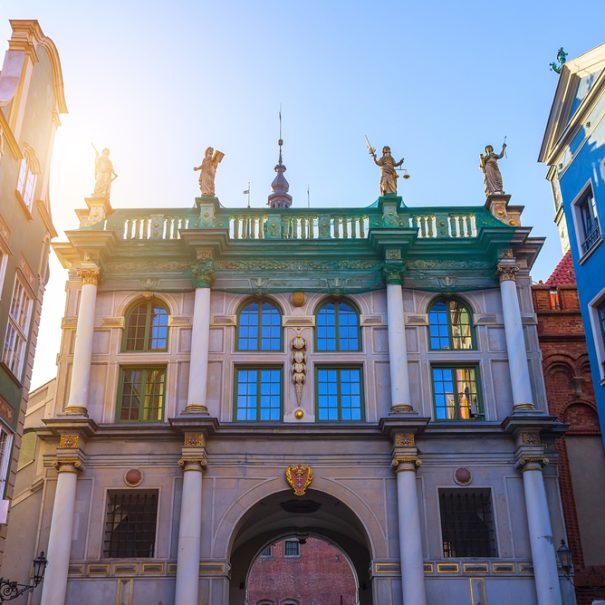
Best Scenic Viewpoints
Town Hall Tower
Climb 203 wooden steps and a narrow spiral staircase to reach 82 meters high— you can easily skip the gym that day. At the top, a gallery opens with views from the shipyards to the Baltic horizon. The colorful rooftops below look like someone spilled LEGO over the city. At noon each day, a 37-bell carillon plays the Gdańsk anthem. Insider tip: the sound is especially clear on the tower platform.
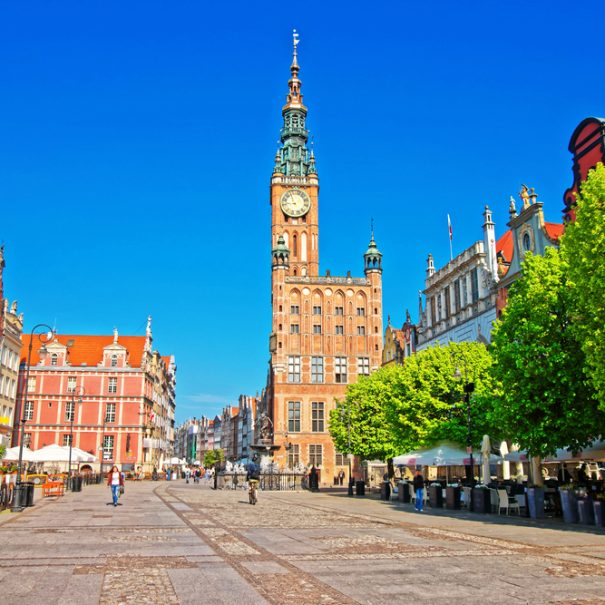
AmberSky Ferris Wheel
Fifty meters might not sound tall, but the 36 air-conditioned gondolas have floor-to-ceiling panoramic windows that make the Motława seem to flow beneath your feet. A ride takes about 15 minutes—plenty of time for wide-angle shots or even a secret proposal. After dark, the steel structure glows in shifting colors. Listen to the onboard audio for fun facts about each illuminated building—a city tour in circles.
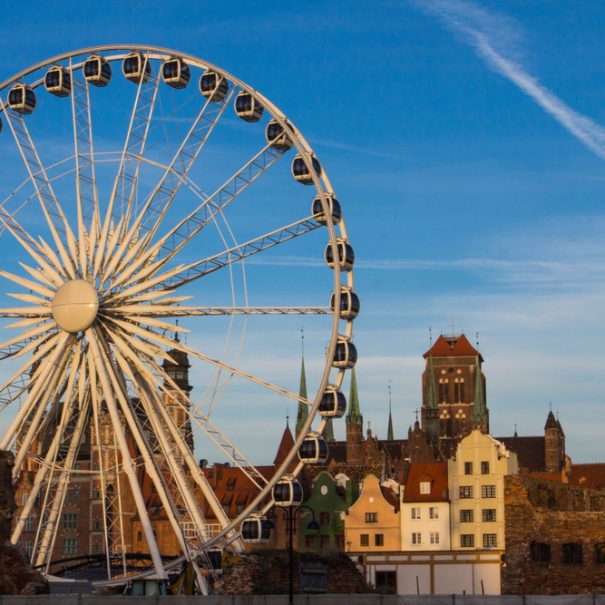
Culinary Highlights for Food Lovers
Pierogarnia Mandu
Open kitchen, steaming pots, and the steady clack-clack of pierogi presses—dumpling craft becomes a spectator sport here. Alongside classics like sauerkraut and mushrooms, you’ll find surprises like salmon-spinach or goat cheese-fig fillings. Vegetarian and vegan pierogis are made at a separate cooking station to avoid cross-contamination. Waiting time? Sometimes—but you can watch the folding process through a glass window and pick your favorite shape. Tip: order the “Mandu Mix” to get a colorful plate of both savory and sweet dumplings.
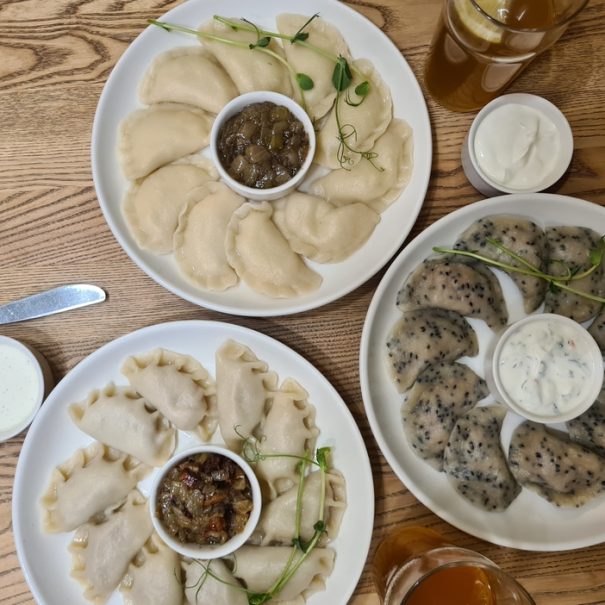
Restaurant Goldwasser
A Hanseatic patrician house from 1598, amber-colored ceiling beams, and views of the Motława—it doesn’t get more romantic. The house specialty is the signature herbal liqueur with real gold flakes, also featured in the dessert “Szarlotka Goldwasser.” The menu blends Polish classics (like duck leg with potato dumplings) with Baltic-Prussian recipes and seasonal inspiration from Kashubian mushrooms. Staff wear traditional vests and share a story with every dish.
Hala Targowa – Food Court
This 1896 historic market hall combines a ground floor full of veggie stalls, mushroom sellers, and honey merchants—a true olfactory triathlon. Upstairs, a modern “street food mezzanine” tempts with Kashubian burgers, Georgian khachapuri, and vegan ramen. For a traditional breakfast, head to the basement milk bar “Stągiewna.” Lunchtime gets busy, but the tasting portions are perfect for eating your way around the Baltic.
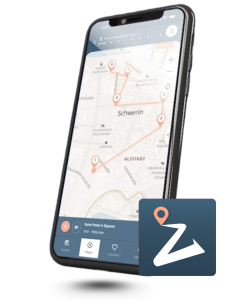
Discover 70+ cities worldwide with professional audio guides – and counting! Thanks to integrated navigation, you’ll easily find your way, even without an internet connection. Whether it’s famous highlights or hidden gems – Plazes brings exciting tours and vivid stories straight to your smartphone. Completely free and no registration required. Download now and get started!
Insider Tips & Hidden Gems
Old Zaspa Cemetery
This unique and peaceful spot is home to striking murals and street art. Here, history and art merge in fascinating ways.
Japanese Garden in Oliwa Park
Tucked behind tall beech trees lies a mini Zen oasis with a tea pavilion, koi pond, and fiery red maple leaves in autumn. A gift from Gdańsk’s sister city Kyoto, the garden follows the aesthetics of silence (Seijaku) and simplicity (Kanso). Sit on the wooden bridge and listen to the bamboo water feature shishi-odoshi. During cherry blossom season, arrive early—wedding photographers love this spot.
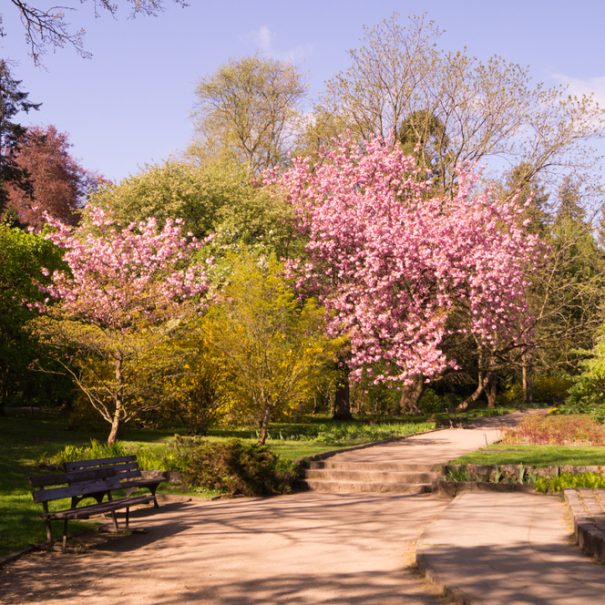
Museums for Culture and History Enthusiasts
European Solidarity Centre
On the site of the former Lenin Shipyard, this award-winning museum tells the story of “Solidarność,” Lech Wałęsa, and the peaceful resistance against the communist regime. The rusty corten steel facade recalls ship hulls; inside are interactive exhibits, original workers’ helmets, and a dose of revolutionary nostalgia.
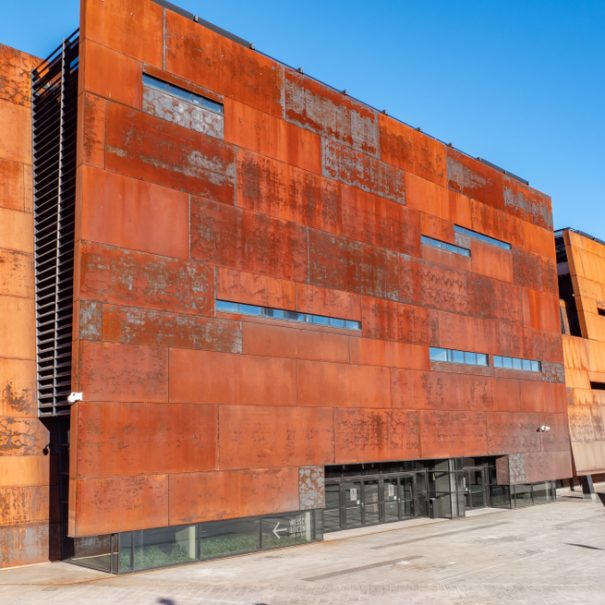
Museum of the Second World War
Even the museum’s dramatic, tilted architecture signals a new approach to history. Over 5,000 exhibits, multimedia installations, and immersive scenography offer both global and personal perspectives on 1939 to 1945. After three intense hours, the underground café is a great place for cake and reflection.
Amber Museum
Gdańsk is known as the “Amber Capital”—and this museum teaches you everything about Baltic gold. In 2019, it moved into the restored Gothic ruins of the Great Mill, next to a rushing waterwheel that once ground grain for the Hanseatic League. In the “fake corner,” you’ll learn how to tell real amber from copal—very helpful when souvenir shopping. You can even carve your own amulet in the workshop studio—a one-of-a-kind keepsake.
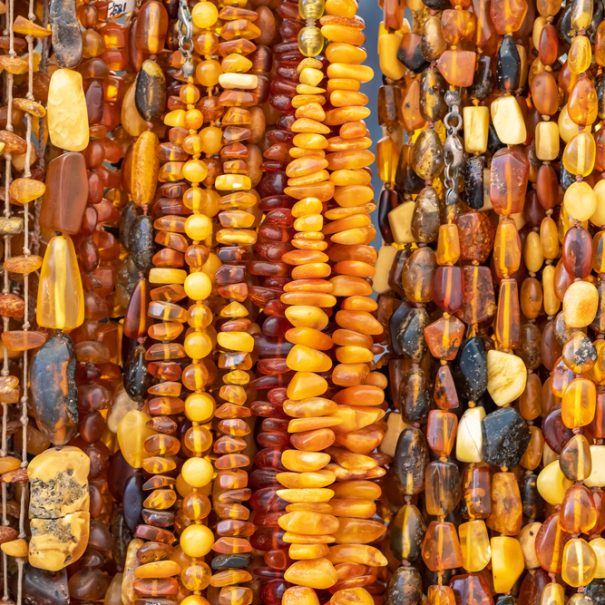
National Maritime Museum
Not only is this museum impressively located by the river, it also includes a section in the Crane and a state-of-the-art Maritime Culture Center. Star of the collection: the Sołdek, a 1949 ore freighter you can explore from hold to captain’s cabin. Interactive displays explain ocean currents with water tanks and LEGO ships (yes, really). A VR station takes you onto a merchant ship in a Baltic storm—complete with 4D wind. Meanwhile, little pirates can climb ropes and explore on the kids’ deck.
Shopping & Souvenirs
Whether it’s amber pendants, hand-printed “Solidarność” posters, or the legendary Goldwasser herbal liqueur—souvenirs here literally shine. Around Mariacka Street, jewelry galleries offer certified Baltic amber (and experts happy to explain how to spot fakes). Fashion hunters can head to the modern Forum Gdańsk shopping center, just five minutes from the main train station. Sweet tooth? Try Ptasie Mleczko (chocolate marshmallow candy) or traditional Toruń gingerbread, available in department store delicatessen sections.

Tips for Cruise Passengers
The modern cruise terminal is located at the northern tip of Westerplatte, about 8 km from the Old Town center. A paid shuttle bus runs several times a day (about 20 minutes travel time). Alternatively, bus line 106 goes straight to the main station. Tickets can be purchased contactlessly at machines. Car rental agencies like Sixt and Avis also operate near the port. For a scenic transfer, take the “F5” excursion boat—ocean breeze included.
Tips for Solo Travelers
Gdańsk is considered one of the safest big cities in Poland. Pickpockets might like amber, but not your wallet. Public transport is frequent and affordable—the PKM train takes you from the airport to the main station in just 30 minutes. The main tourist information center is on Long Market, offering free city maps and a Wi-Fi hotspot.
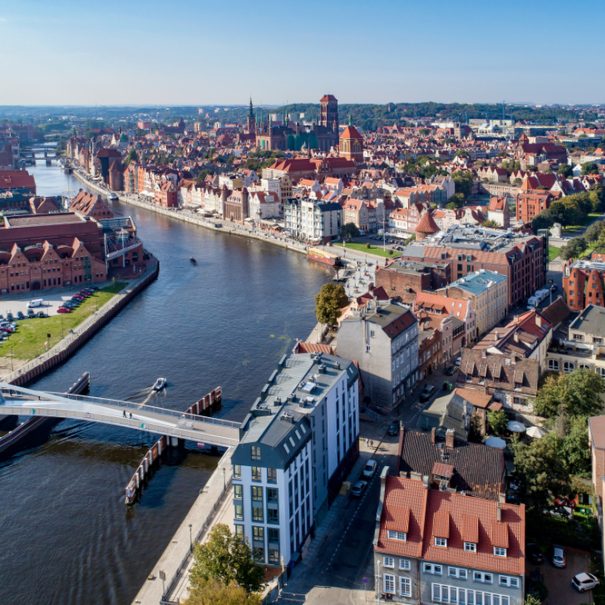
Conclusion
Gdańsk is like the perfect craft beer: historically malty, freshly hoppy, and topped with a Baltic Sea foam head. From medieval cranes and revolutionary shipyards to shimmering amber art, the city offers a rich tapestry of highlights for every city trip. Whether you’re following in the footsteps of kings, crane workers, or coffee lovers—in Gdańsk, every corner tells a new story… and you’ll probably end up by the Motława with a plate of pierogi in hand.
FAQs
1. How much time should you plan for a visit to Gdańsk?
Two days are enough to see the main highlights—such as the Crane, Long Market, and the European Solidarity Centre. If you also want to visit the beaches of Sopot, the seaside resort of Gdynia, or the Westerplatte, plan for three to four days to fully enjoy the Tricity vibe (Trójmiasto).
2. Which local specialties should you try in Gdańsk?
Must-tries include pierogi (filled dumplings), Kashubian smoked fish, and the honey-based herbal liqueur “Goldwasser.” In local bakeries, you’ll also find obwarzanki—ring-shaped bread—and during fish season, fresh herring straight from the market.
3. When is the best time to visit Gdańsk?
Summer (June to August) brings warm Baltic weather and festivals like the St. Dominic’s Fair in July/August. Spring and early autumn are milder and less crowded—perfect for relaxed sightseeing. Winter can be cold, but Christmas markets and the frosty Baltic backdrop give the city a unique charm.
4. Where can you buy real amber and what should you look out for?
Gdańsk is known as the “amber capital.” On Mariacka Street, you’ll find reputable jewelry stores lined up. Look for a certificate of authenticity, a warm glow, and small natural inclusions. A simple test: if you rub amber with fabric, it becomes electrostatically charged and attracts paper—plastic does not.
5. How barrier-free and safe is Gdańsk for travelers?
Gdańsk is considered safe, though you should watch out for pickpockets in busy areas like Long Bridge. Many museums and new public buildings have elevators and ramps. However, the cobblestones in the Old Town mean not all areas are fully accessible. Research barrier-free routes in advance or use the accessible water tram to bypass certain sections.




